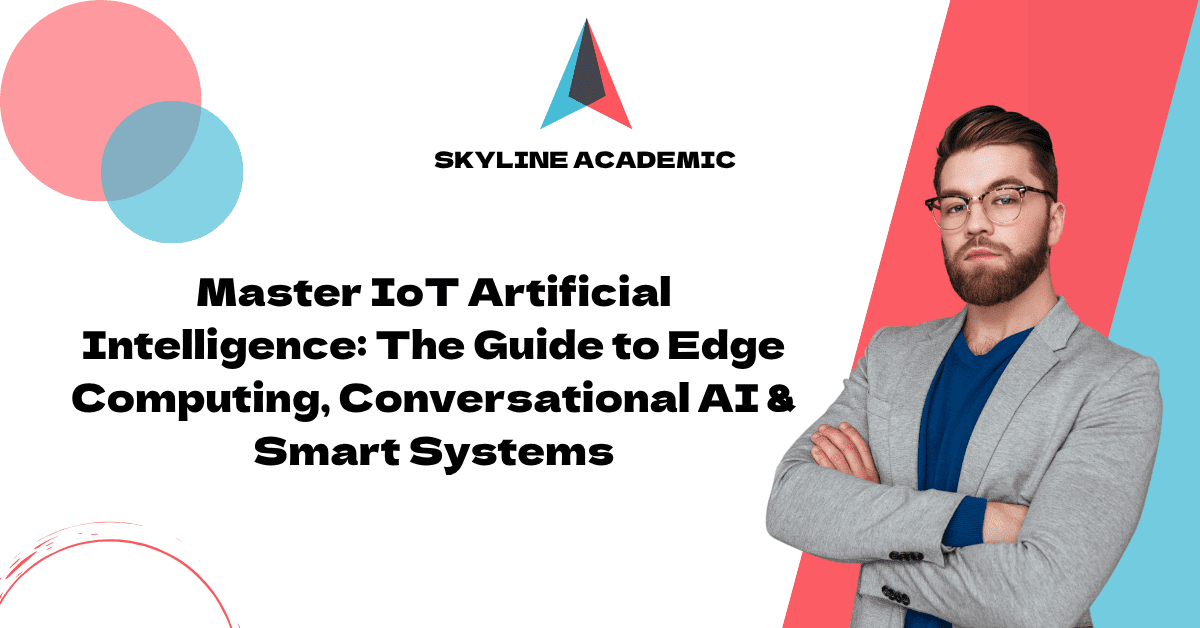Master IoT Artificial Intelligence: The Guide to Edge Computing, Conversational AI & Smart Systems
The IoT artificial intelligence market grows at an unprecedented rate. Edge AI is in the tens of billions today and projected to grow rapidly. This growth represents one of the fastest-growing segments in technology today.
The joining of AI with IoT—commonly known as AIoT—changes how data gets processed and analyzed. Experts predict that 75% of all data will move outside traditional centralized facilities by 2025. This shift fundamentally changes our approach to smart systems.
Edge computing and AI together create new possibilities in many industries. Autonomous vehicles use edge computing to process camera, LIDAR, and sensor data instantly for safe navigation. Smart systems emerge from conversational AI in healthcare, artificial intelligence language learning, and edge device IoT applications.
This piece will help you find the key components of AIoT technology, its ground applications, and its strategic benefits. These benefits range from better data privacy to major cost savings. Your success in the ever-changing digital world depends on understanding these technologies, whether you’re building your first smart system or upgrading existing infrastructure.
Understanding AIoT and Edge Intelligence
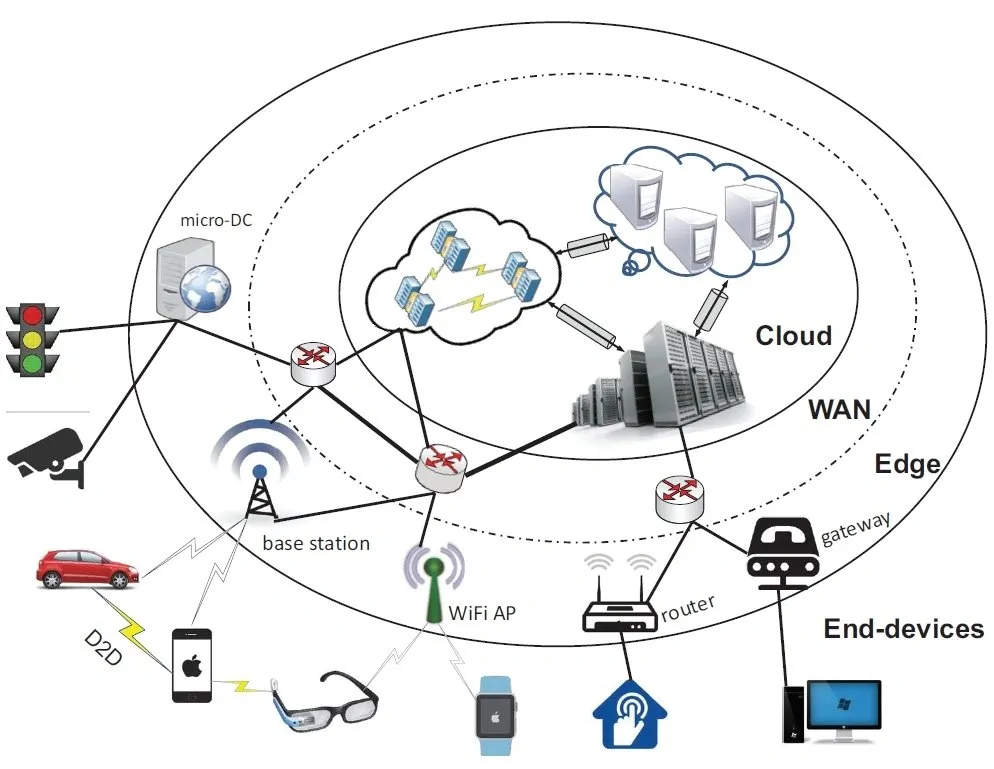
Image Source: Viso Suite
AI and IoT networks have joined to create AIoT (Artificial Intelligence of Things), which revolutionizes connected devices’ operations. Traditional IoT systems just collect data. AIoT devices can process information locally and make decisions without human input.
What is AIoT and how it works
AIoT merges IoT devices’ data collection with AI’s analytical strength. Smart systems can gather information and analyze it immediately. They learn from patterns and act intelligently on their own. The system works in two ways. Cloud-based AIoT sends data to central servers for processing. Edge-based AIoT handles information right on the devices or nearby. This technology creates intelligent systems that get better through machine learning as they provide faster results.
Difference between Edge AI and Cloud AI
Edge AI and Cloud AI work differently based on their data processing location. Edge AI computes directly on devices or nearby servers. Cloud AI needs to send data to distant data centers. These differences create several key contrasts:
| Feature | Edge AI | Cloud AI |
| Latency | Low; millisecond-level responses | Higher; dependent on network speed |
| Privacy | Data stays local, reducing exposure | Data transmitted to external servers |
| Reliability | Works offline | Requires internet connection |
| Processing power | Limited by device capabilities | Virtually unlimited, flexible |
| Bandwidth usage | Lower; minimal data transmission | Higher; sends raw data to cloud |
Why edge computing matters in smart systems
Edge computing revolutionizes AIoT systems by processing data closer to its source. Response times drop from seconds to milliseconds. This speed becomes crucial for time-sensitive uses like autonomous vehicles that need instant sensor data processing. Local data processing also protects sensitive information better. It enhances privacy and security while using less bandwidth.
Smart systems with edge intelligence work even during network outages, which makes them more dependable. Experts predict 80 billion IoT devices and sensors will connect online by 2025. This massive scale makes central cloud processing difficult because of bandwidth limits and speed requirements.
Core Components of Smart Edge Systems
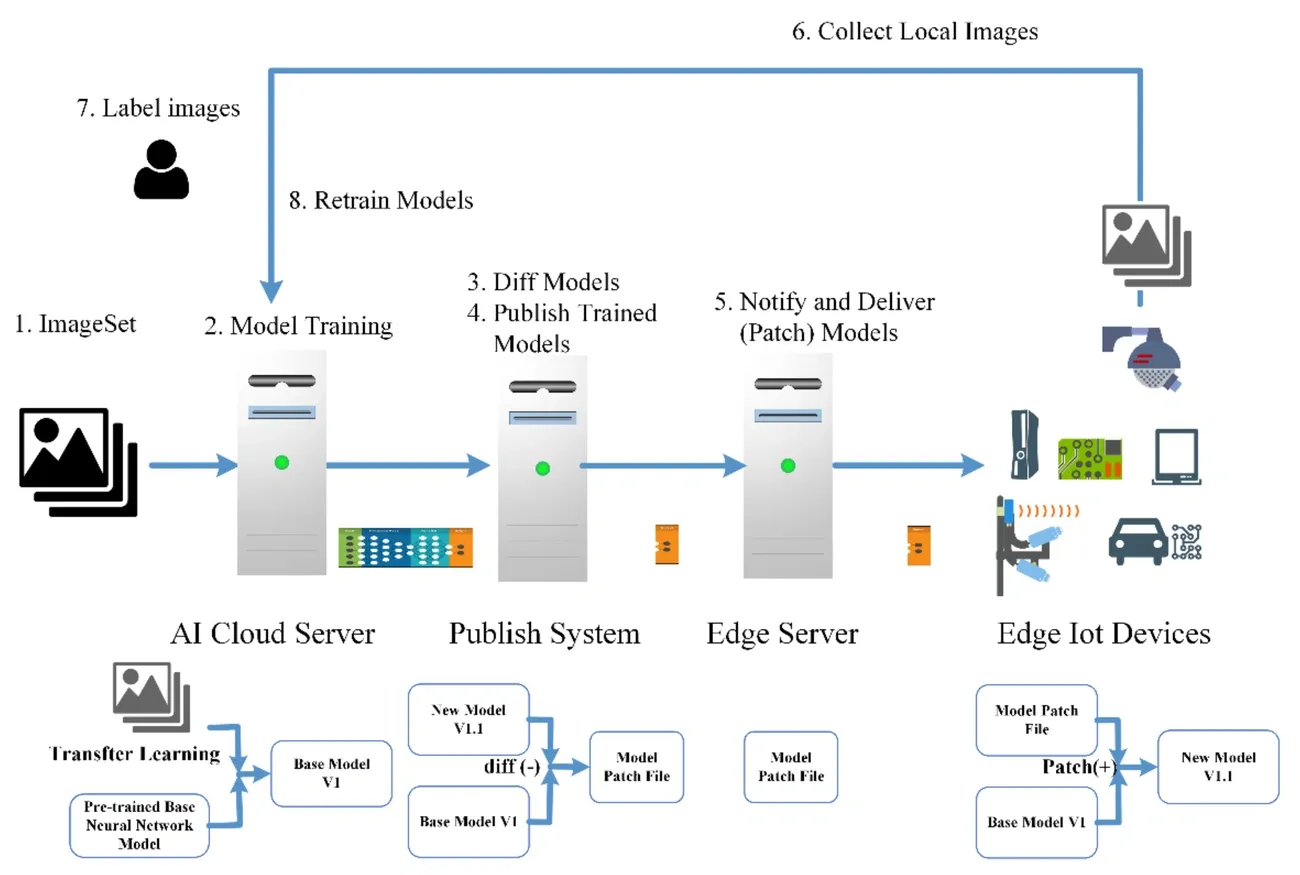
Image Source: MDPI
Edge computing success relies on four main components that work naturally together. Smart edge systems need these building blocks to work in any discipline.
Edge device IoT hardware and sensors
The foundation of edge systems consists of distributed hardware that processes data locally. Simple IoT sensors capture environmental conditions while smart cameras perform real-time video analysis. Edge devices pack enough computing power to run applications and machine learning models without cloud connectivity. The hardware ranges from basic sensors to powerful edge servers with multi-core processors, GPUs, and AI accelerators. Edge hardware must withstand harsh conditions like dust, temperature changes, and vibration. This makes rugged design vital for factory floors and remote outdoor locations.
AI models optimized for edge environments
Resource constraints at the edge mean AI models need optimization to work well. TensorFlow Lite, PyTorch Mobile, and ONNX Runtime help deploy lightweight models for quick, local inference. These models improve through quantization and pruning. Quantization reduces numerical precision while pruning removes unnecessary connections. Both techniques minimize size and boost speed. Model architecture becomes a balance between accuracy, inference speed, and available resources. Options range from compact models like MobileNet to specialized architectures for specific uses.
Connectivity and data flow architecture
Edge computing uses distributed architecture to move data between sensors, local nodes, and cloud systems. IoT gateways connect edge devices to cloud systems. They translate protocols and handle data locally. The system processes time-sensitive decisions locally and sends selected data to central systems. This approach saves network bandwidth and computing resources. It proves valuable for managing remote IoT deployments.
Software frameworks for deployment
Edge AI applications need deployment frameworks to run well. AWS IoT Greengrass, Azure IoT Edge, and Google Coral lead the options. These platforms make model deployment simple and help manage device fleets. Edge environments use Linux-based systems for flexibility or real-time operating systems for time-critical tasks. Teams use Kubernetes to update firmware, track performance, and roll out features across devices. This ensures secure and consistent operation throughout the edge infrastructure.
Real-World Applications Across Industries
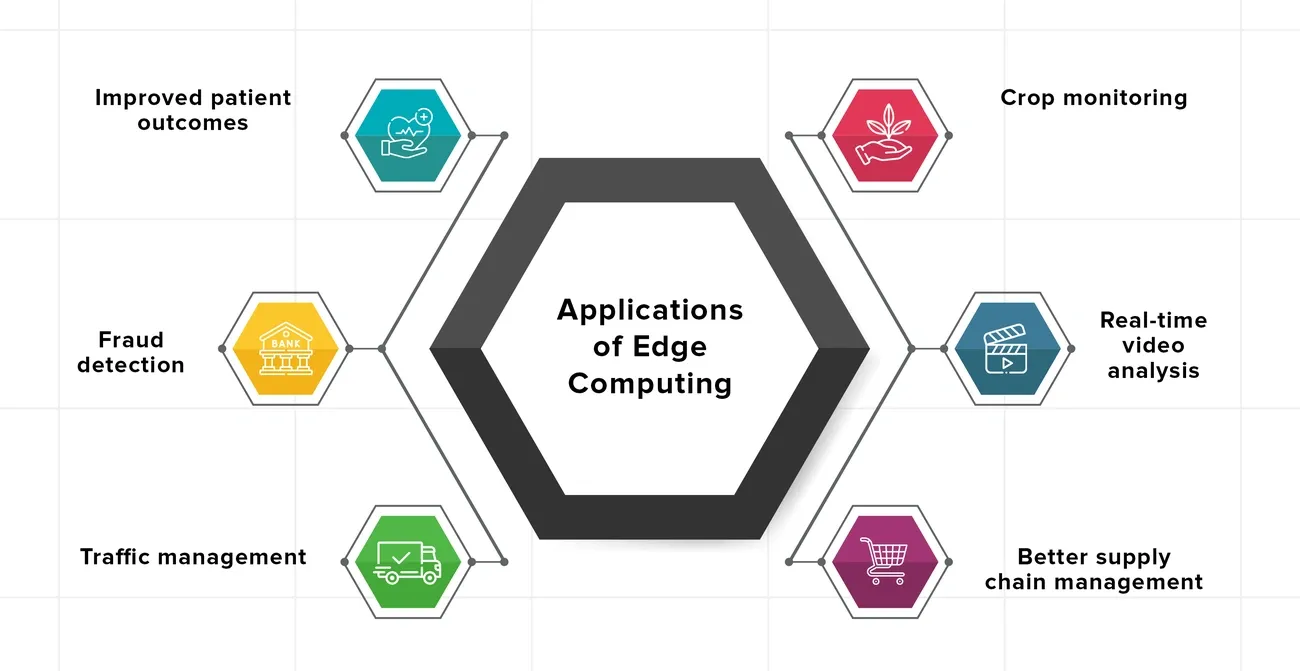
Image Source: Daffodil Software
AIoT technologies reshape operations across global industries through specialized applications that address unique challenges and requirements.
Edge computing in autonomous vehicles
Autonomous vehicles depend heavily on edge processing to make split-second decisions. Tesla, Waymo, and other manufacturers utilize edge AI to detect objects and track pedestrians and obstacles with minimal delay. These systems process sensor data inside vehicles that enables instant reactions, which allows cars to make vital safety decisions on their own even with poor internet connectivity. It also helps with predictive maintenance by monitoring vehicle performance to forecast component failures before they happen.
Conversational AI in healthcare systems
Healthcare facilities now deploy conversational AI chatbots to improve patient engagement while tackling workforce challenges. These systems gather information, answer questions, and support clinical decisions through natural dialog. Research indicates that well-designed conversational agents match clinician performance for frontline screening with 97.7% agreement compared to human staff. In spite of that, these systems’ implementation needs careful attention to equity considerations to prevent bias perpetuation or worsening health inequalities.
Smart cities and infrastructure monitoring
Modern cities use IoT sensors to monitor critical infrastructure components like bridges, tunnels, and roadways. Sensor networks track structural displacement, vibration, and environmental conditions. To cite an instance, Statotest deployed CHESTER units to monitor medieval town hall roof trusses damaged by insects and fungal infestation, and automated alerts go out via SMS when problems are detected. These systems work autonomously for years on battery power and withstand harsh conditions while providing continuous oversight.
Retail and inventory automation
Edge AI technologies drive retail transformation that optimizes operations while creating customized customer experiences. Systems like Kroger’s EDGE smart shelves utilize IoT-enabled displays to show prices and promotions while connecting to customers’ phones via Bluetooth for personalized shopping. The global smart agriculture market should grow from USD 20.4 billion in 2023 to USD 40.5 billion by 2028. Dana Incorporated used RFID technology for automated inventory tracking and achieved 100% item traceability while reducing production cycle time.
Agriculture and environmental sensing
Smart farming utilizes IoT-enabled sensors to monitor significant environmental factors affecting crop growth. These systems track soil moisture, humidity, temperature, and nutrient content in real-time. Optical sensors capture spectral reflectance data for vegetation index analysis that helps assess crop health and drought stress. Camera-equipped traps detect pests, and machine learning models analyze sensor data to provide actionable recommendations for irrigation and fertilization. The benefits are clear, yet challenges exist regarding implementation costs, data security, and farmers’ digital literacy.
Benefits and Strategic Advantages
Edge-based AIoT implementation offers four game-changing advantages that change how organizations handle their operations and data infrastructure.
Real-time decision-making and low latency
Edge computing cuts response times from seconds to milliseconds. This speed allows time-critical applications to work smoothly. Quick processing helps autonomous vehicles make split-second driving decisions. Industrial equipment can adjust operations right away without depending on cloud connections. Edge-based systems bring down response times from 100-200 milliseconds (cloud-based) to just 5-10 milliseconds.
Improved data privacy and compliance
Edge AI boosts data security by storing sensitive information locally instead of sending it to external servers. This method reduces network vulnerability risks and helps organizations meet GDPR and HIPAA requirements. Healthcare facilities can analyze patient data without sending raw information elsewhere.
Energy efficiency and cost savings
Local processing at the edge cuts bandwidth usage and related costs by a lot. Illinois homeowners who use edge-based energy management see 15-30% reductions in monthly bills. They save around USD 350-500 each year. On top of that, TimeGAN-N-BEATS architecture reduced RMSE by more than 8% and MSE by over 18%.
Scalability and system resilience
Edge computing builds distributed intelligence networks that don’t have single failure points. These systems keep running during internet outages and adjust to changing workloads automatically. This makes edge AI valuable especially when you have remote locations or network problems.
Conclusion
AI and IoT technologies are joining forces to radically alter how smart systems work in sectors of all sizes. This piece explores how AIoT merges data collection with analytics to build autonomous, intelligent systems. Edge computing pioneers this revolution by processing data directly on devices in milliseconds instead of using distant cloud servers.
Edge-based AIoT solutions offer four strategic benefits. The system makes decisions immediately due to minimal delays. Data stays local which boosts privacy substantially. Companies save money and energy by using less bandwidth. The system remains flexible and strong even when networks fail.
AIoT technology changes many industries in ground-breaking ways. Self-driving cars process sensor data instantly to navigate safely. Healthcare facilities use conversational AI to improve patient care. Smart cities track their infrastructure non-stop. Retail operations manage inventory better. Agricultural systems boost crop yields through environmental monitoring.
The technology’s growth makes it crucial to understand its core parts – from hardware sensors to optimized AI models. Want to become skilled at IoT artificial intelligence with expert help? Edge intelligence combined with IoT will without doubt shape smart systems’ future. Knowledge of these advances gives you a clear edge in our increasingly connected world.
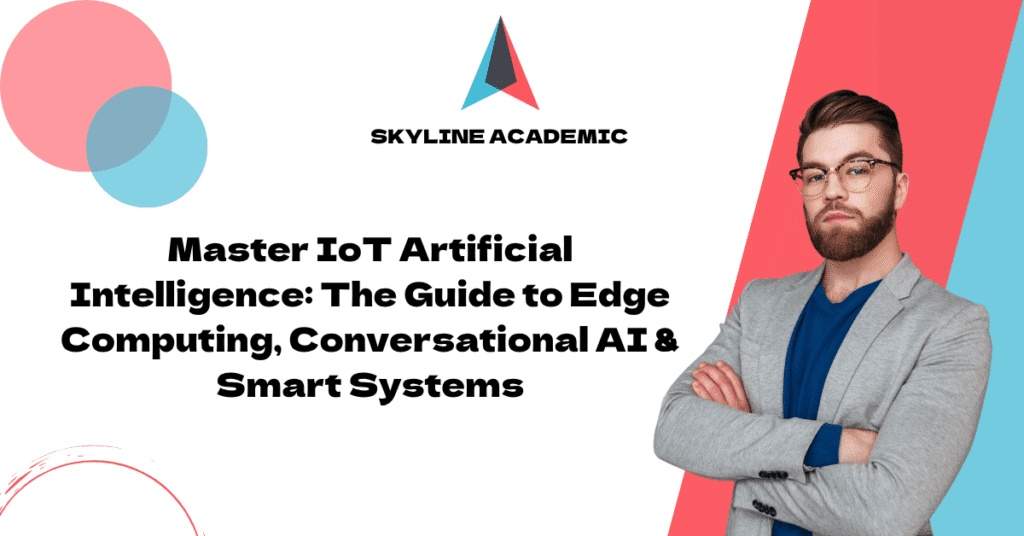
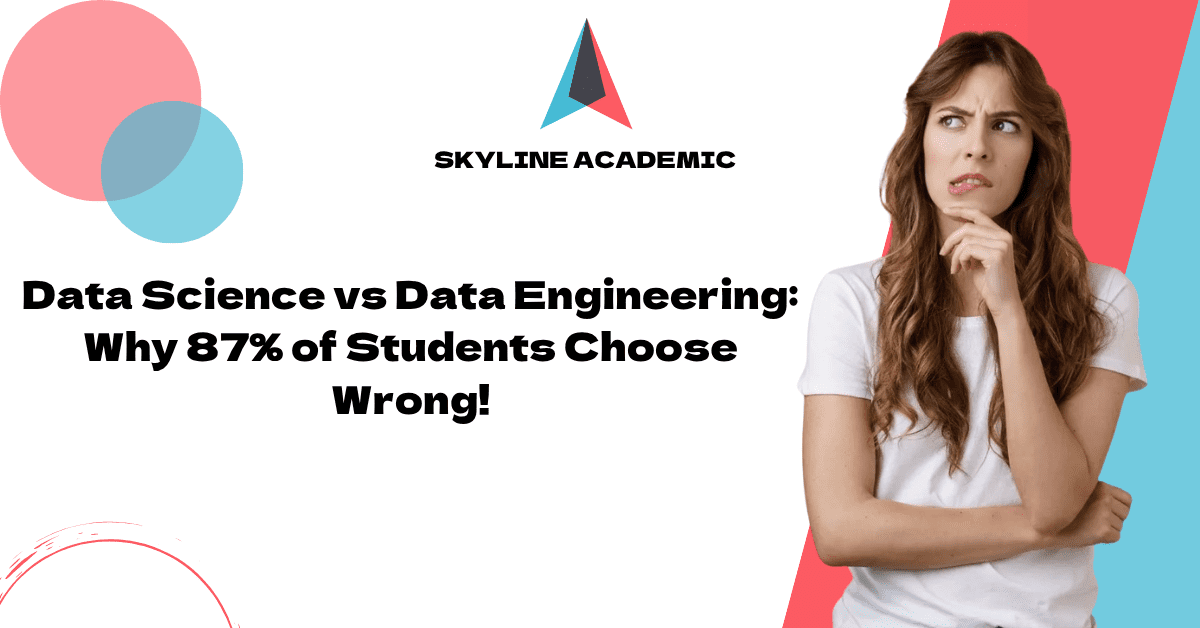
![Is Cyber Security Hard Expert Guidance Makes It Easy [2025]](https://skylineacademic.com/wp-content/uploads/2025/10/is-cyber-security-hard-expert-guidance-makes-it-easy.png)
